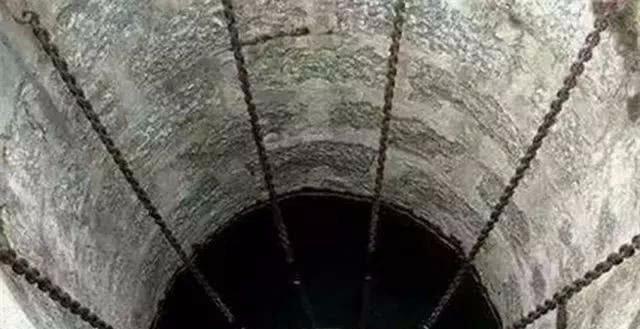With the evolution of the long river of history, we will deify many historical figures and make them have fantastic special functions, such as Wei Yan of the Tang Dynasty, who was endowed with the ability to slay the Dragon King by our folklore, and Jiang Ziya, who was originally only a booster when the King of Wu was cutting down the silk, but it was portrayed by people as a figure who can be canonized as a god, and in addition to the legendary Liu Bowen during the Ming Dynasty, there is also a person who is also rumored to be a god, that is, the monk Yao Guangxiao who helped Zhu Di fight the world.

During the Ming Dynasty, Yao Guangxiao left many legendary stories, one of which is the "Lock Dragon Well" that still exists on the ground of Beijing. Suolongjing can be said to be a substantial product of the existence of mythological stories with Chinese characteristics. Because when the ancients faced the flood, in addition to using the scientific means to solve it, they would also carry out some idealistic practices for the consideration of feudal thinking. This is how the Lock Dragon Well was produced, because since ancient times, people believe that the Dragon King is in charge of all the changes in the flow of water and rivers, and if there is a flood, it must be the Dragon King who is at work, so everyone will hope to suppress the Dragon King.
When Zhu Di was planning to move to Beijing City, the Dragon King sent water to flood the city of Beijing, but yao Guangxiao captured and suppressed him under the seabed, locking him inside the deep well, because the Dragon King had asked Yao Guangxiao when he could let him out, Yao Guangxiao said that when the bridge was long and became an old bridge, it could come out, but Yao Guangxiao took this place as the North New Bridge, and there was never an old time, so the 'Lock Dragon Well' in this place was preserved forever.
At the mouth of each locked dragon well, you can see that there are many large iron chains leading directly to the bottom of the bridge, and some people say that the chains lead directly to the underground river, which can be pulled, but how to pull will not be completely pulled out. It is said that later, during the Japanese invasion of China in 1937, the Japanese army built a construction battalion next to it, ready to pull out the iron chains in the well and melt them into bullets, but the Japanese army spent a long time, and the chain seemed to have no end, and because of the pull of the chains, the well water overturned and made a rumbling sound. This strange noise made many Japanese soldiers afraid, so they had to put the chain back into the well. Many old Beijingers know about Suolongjing, and an old man who lives near the Beixin Bridge also confirms the existence of this matter of the Japanese army.
The old man also said that when the lock dragon well did not have a manhole cover, when he was a child and his companions playing here, he threw stones into it, and he could not hear the noise for a long time. With the development of the times, Beijing began to build subway traffic, and this locked dragon well of the Beixin Bridge was rediscovered during the excavation process, and then the route designers planned the subway to deliberately avoid detouring it for the sake of protecting historical relics. In fact, whether it is traditional culture or mythological stories, Suolongjing is a part of China's colorful culture.